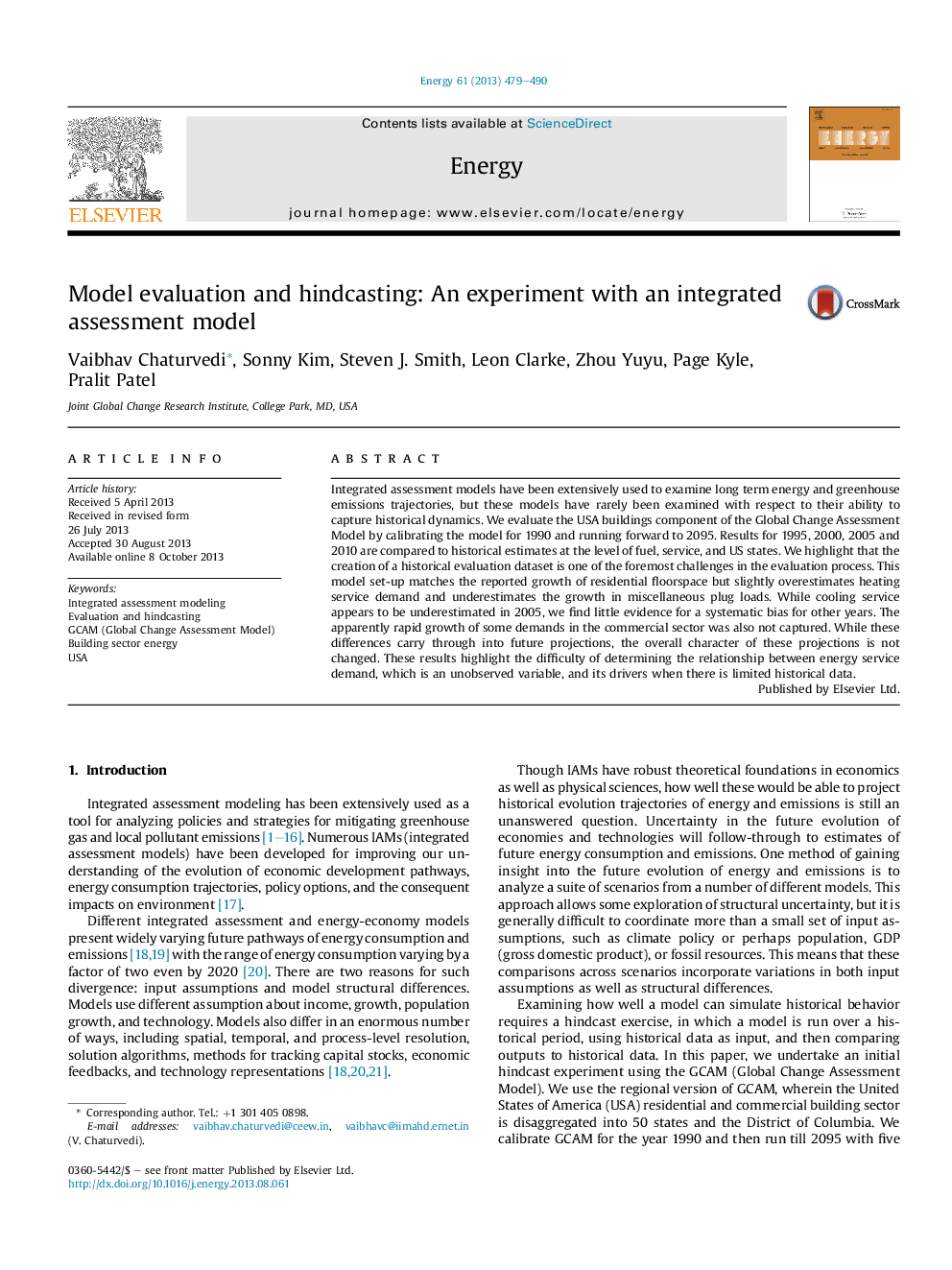| Article ID | Journal | Published Year | Pages | File Type |
|---|---|---|---|---|
| 8079130 | Energy | 2013 | 12 Pages |
Abstract
Integrated assessment models have been extensively used to examine long term energy and greenhouse emissions trajectories, but these models have rarely been examined with respect to their ability to capture historical dynamics. We evaluate the USA buildings component of the Global Change Assessment Model by calibrating the model for 1990 and running forward to 2095. Results for 1995, 2000, 2005 and 2010 are compared to historical estimates at the level of fuel, service, and US states. We highlight that the creation of a historical evaluation dataset is one of the foremost challenges in the evaluation process. This model set-up matches the reported growth of residential floorspace but slightly overestimates heating service demand and underestimates the growth in miscellaneous plug loads. While cooling service appears to be underestimated in 2005, we find little evidence for a systematic bias for other years. The apparently rapid growth of some demands in the commercial sector was also not captured. While these differences carry through into future projections, the overall character of these projections is not changed. These results highlight the difficulty of determining the relationship between energy service demand, which is an unobserved variable, and its drivers when there is limited historical data.
Keywords
Related Topics
Physical Sciences and Engineering
Energy
Energy (General)
Authors
Vaibhav Chaturvedi, Sonny Kim, Steven J. Smith, Leon Clarke, Zhou Yuyu, Page Kyle, Pralit Patel,
